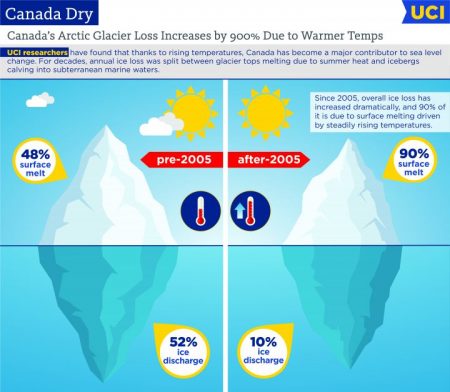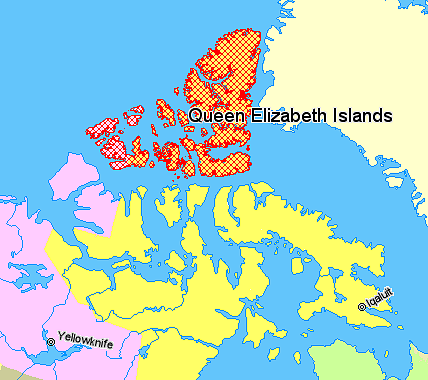February 22, 2017 – When we read about sea level rise the usual suspects are Greenland and Antarctica. Sometimes alpine glaciers get honourable mention. But seldom do you hear about Canadian ice other than Arctic Ocean sea ice. Well, it appears that glaciologists studying the Canadian Arctic archipelago have produced data showing surface ice melt loss between 2005 and 2015 amounting to 30 gigatons a year. Compare that to levels of ice cap loss prior to 2005, a mere 3 gigatons and we are looking at a 900% increase.
The study results, published in Environmental Research Letters in the last week, map the velocity of ice movement and discharge in the Queen Elizabeth Islands. The glaciers on these islands cover 105,000 square kilometers (over 40,000 square miles) and represent 25% of Arctic land ice outside Greenland. Eight major icefields cover Ellesmere, Devon, Axel Heiberg, Amund Ringness, Ellef Rignes, Borden, Mackenzie King, Bathurst, Cornwallis, and Prince Patrick Islands.
Observations prior to 2005 show a mass balance between seasons with a small incremental loss of ice annually. But since 2005 the mass loss has increased leading to many islands exhibiting ice-free areas for the first time since observations were recorded. The study looks at both land-terminating and marine-terminating glaciers with a general trend to increased melting for both since 2005. The scientists conclude that 90% of the melt correlates to temperature rises since that year.
Lead author in the study, Romain Millan, an Earth system scientist, states, “We identified meltwater runoff as the major contributor to these ice fields’ mass loss in recent years. With the ongoing, sustained and rapid warming of the high Arctic, the mass loss of the Queen Elizabeth Islands area is likely to continue to increase significantly in coming decades.”
Before 2005 ice loss was attributed as follows: 52% to calving icebergs and 48% to surface melt. But now surface melt represents 90% of the ice loss. If the trend continues, which considering the sea ice loss and overall atmospheric temperature trends in the Arctic, we may see the Queen Elizabeth Island glaciers vanish before century end. And that means a little more gitty up to overall global sea level rise. By how much? The study doesn’t say.












